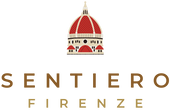One, two, ten, twenty, or thirty, it's hard to say, but there are certainly many ways to drink coffee in Italy. When you arrive in Italy, you'll find yourself in a country famous worldwide for its art, its beauty, but also for the widespread consumption of coffee among Italians. It's estimated that, on average, four coffees are consumed per person per day at different times: breakfast, mid-morning, after lunch, and late afternoon.

Going to Italy and not trying at least the most common variations could be curious. Let's start with the classic: "A coffee, please!" This phrase refers to the pure and simple espresso served in a small, often heated porcelain cup. Alongside the espresso, you'll find variations like the ristretto (with less caffeine, as it's half the size of an espresso) and, on the other hand, the lungo (with more caffeine), also called "tall" because it almost fills the cup to the top. Then comes milk, and we have the macchiato in two versions: macchiato caldo or macchiato freddo, depending on whether hot or cold milk is added to the espresso. Not to be confused with the macchiatone, which is an espresso with a larger amount of milk and foam served in a large cup (note that some bars charge more for this). And then there's the cappuccino, espresso in a large cup with steamed milk and milk foam, finished with or without chocolate powder. Here, too, we must mention two variations: cappuccino with lots of foam or little foam. Still, on the subject of milk, we should also mention the latte macchiato, not to be confused with the caffè latte. While the latte macchiato is prepared in a tall and narrow glass, with three layers that do not overlap - milk at the bottom, coffee in the middle, and frothed milk on top - the caffè latte is prepared by mixing hot milk and coffee and served in a glass tumbler.

In this quick overview, we must also mention the corrected coffee, which is nothing but an espresso lengthened with a distilled spirit (usually grappa or sambuca) in its most historical versions, such as the Ponche alla livornese (lengthened with a liqueur reminiscent of rum) and the moretta fanese, the typical coffee drunk by sailors in Fano, lengthened with a typical liqueur called "moretta."

Remember that further coffee variations depend on the region you're traveling in. It wouldn't be unusual, especially in summer and in the south, to find yourself enjoying an espresso poured over ice cubes or enriched with whipped cream or ice cream. Remember that whichever coffee you choose to drink in Italy, coffee at the counter involves a quick stop and a relatively low price (€1.20), while if you decide to sit at a table, coffee or cappuccino could be costly. And, don't forget that in Italy, coffee is drunk quickly, with a short break, and you can't linger for hours at the table, having just a... coffee, please!

